I've updated this very popular article a little bit and pushed it up from the archives, since it is the season for cold noodles now. I'll also have a followup recipe soon for the perfect accompaniment to zaru soba. Originally published in May 2007.
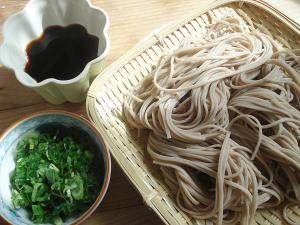
Most of Japan gets very hot and humid in the summer. To combat the heat, a number of dishes meant to be eaten cold have been developed. One of the main cold summer dishes is cold noodles.
Soba noodles, made of soba (buckwheat), are available all year round but are really popular when the heat turns unbearable. As with other cold noodles, they are prepared in a way that may seem strange if you're used to pasta and other Western-style noodles. Unlike pasta, most Japanese noodles, including soba, are rinsed rather vigorously in cold running water. This not only cools them down but gets rid of excess starch, which adversely affects the flavor of the noodles. Many recipes written in English omit this critical rinsing step: you don't just plunge it in cold water, as many directions incorrectly state, but you actively wash the noodles. Once you've done this once, you will definitely notice the difference. I've given detailed instructions for this procedure below.
Dipped into a properly made sauce or soba tsuyu, with plenty of spicy condiments or yakumi, there's nothing more refreshing to eat on a hot summer evening.
Filed under:
basics japanese summer noodles soba
Submitted by maki on 17 February, 2009 - 20:40
Update: I've updated this post substantially in these two articles, 10 years later: How to cook great Japanese style rice, and How to make sushi rice (shari). Please take a look there - you'll probably find them a lot clearer. I've learned a lot myself in 10 years! ^_^
This is the first how-to and recipe that I posted on Just Hungry. Properly cooked rice is the foundation of a traditional Japanese meal, and you absolutely cannot skimp on the steps detailed here if you are aiming for anything approaching authenticity. I've edited the text to make some things clearer. Back to basics! Originally published in November 2003.
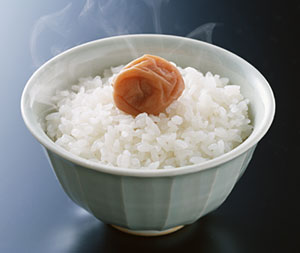
Rice is the staple of Japanese food, and making it just right can be rather difficult if you don't know how. If you think you will be preparing rice regularly, an electric rice cooker will make your life so much easier. You can cook non-Japanese style rice in it too, though I tend to make those in a regular pan.
Type:
recipe Filed under:
basics japanese rice sushi favorites
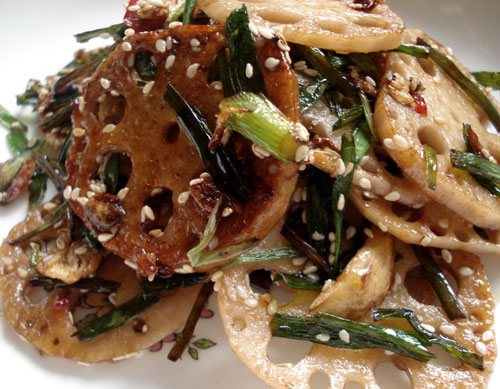
Lotus root (renkon in Japanese) is actually the rhizome of the lotus plant. It's a popular vegetable throughout southern and eastern Asia, but it's still not that well known in the west. Lotus root is full of fiber and various vitamins and other nutrients. In Asia it's believed to have various medicinal qualities, but in macro-nutrient terms it's best to think of it as a starchy vegetable, like potato. Visually of course, it's very appealing with all those little holes. Here I'll explain how it's prepared and eaten in Japan.
Filed under:
basics japanese vegetables vegan
Submitted by maki on 13 October, 2008 - 16:29
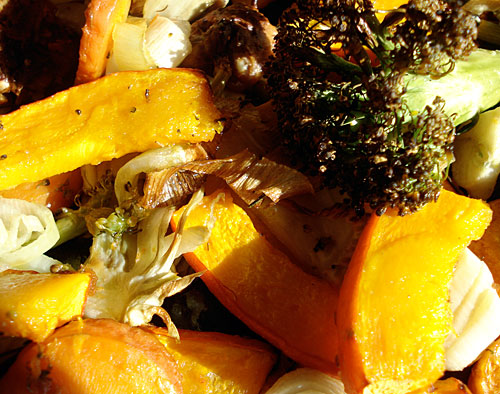
Following up on the previous post where I asked about your favorite go-to everyday dishes (keep your ideas coming!) I thought I'd introduce some of mine. The posting of them may be sporadic, since I'll be taking pictures and things when I actually made them for dinner.
First up is something that is very easy to assemble, quite healthy, cheap, as seasonal as you want it to be, and almost infinately variable. It's simply roasted vegetables. I make this all the time, throughout the year, using whatever vegetables I have. It's a good refrigerator-clearer too.
Type:
recipe Filed under:
basics vegetables vegetarian favorites
Submitted by maki on 13 October, 2008 - 16:26
Here are some of my favorite 'go-to' meals, that I go back to time and again. Most take minimal effort to make and are quite healthy. They are all very good of course!
Type:
handbook Filed under:
basics favorites
One of the most frequently asked questions here is about substituting or leaving out sake or mirin from a dish (most recently to the chicken karaage recipe). This reminds me of how certain ways of thinking exist in Japanese and East Asian cooking, that may not necessarily exist in Western cooking. One of those is the perception of the flavor of meat.
Filed under:
basics japanese ingredients meat
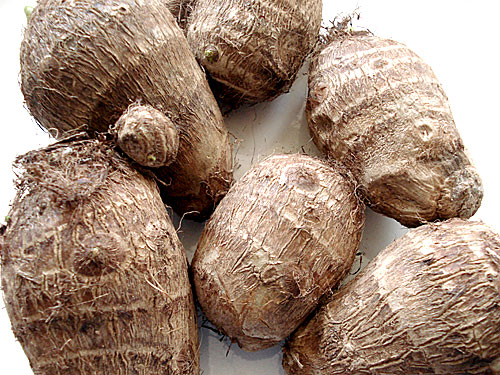
How to prepare that hairy looking beast, the taro root or satoimo.
Filed under:
basics japanese vegetables vegan
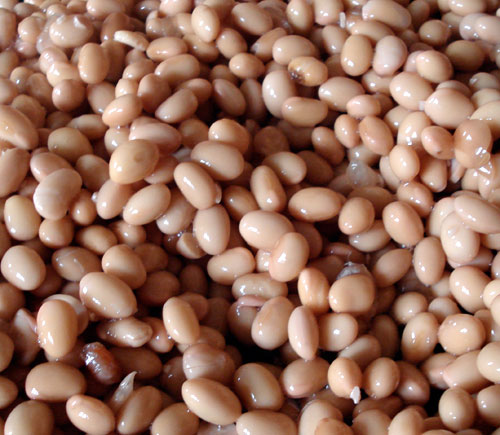
Until fairly recently I had a blind spot when it came to the humble soybean. I regularly consume soy products like soy milk, tofu and okara, not to mention fermented soybean products like natto and tempeh. And green soybeans or edamame are always a great snack.
But for some reason, I didn't really get into eating the whole dried (and cooked) soybean. It's not that they are that much harder to cook than other dried beans either.
In any case, I've rectified that situation and now I cook up a batch of soybeans quite regularly and store them in the freezer. Plain boiled soybeans are amazingly delicious, and just packed with nutrition. The cooking liquid is so rich that it can be used as a very nutritious stock or dashi for making soups and such.
There are a couple of points to watch out for when cooking whole soybeans, which are noted below in copious detail.
Filed under:
basics japanese ingredients legumes vegan
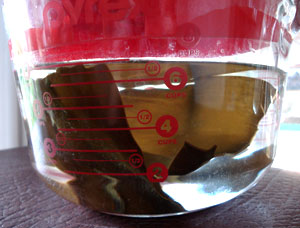
As I've stated many times here over the years, the basis of most Japanese savory foods is a good dashi, or stock. Dashi is not just used for soups, it's used for stewing, in sauces, batters, and many, many other things.
The regular way to make dashi was one of my first entries on Just Hungry. It uses kombu seaweed and dried bonito flakes (katsuobushi). Some people use niboshi, small dried fish, in addition to or instead of bonito flakes.
Katsuobushi and niboshi are both fish-based, so not vegetarian. So how do you make a good vegetarian, even vegan, dashi?
Filed under:
basics japanese soup vegetarian vegan
Submitted by maki on 14 May, 2007 - 17:18
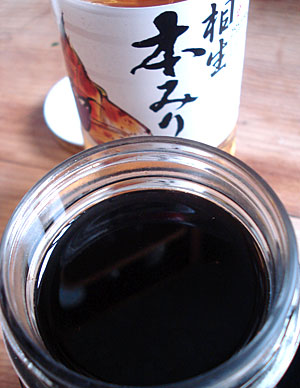
When the weather gets warmer, we eat a lot of cold Japanese noodles: soba (buckwheat noodles), hiyamugi (thin wheat noodles), so-men (even thinner wheat noodles), Sanuki udon (thick wheat noodles- Sanuki is the name of a region famous for udon) and harusame (bean or 'glass' noodles). For most cold noodle dishes a salty sweet soy sauce based soup or dipping sauce called mentsuyu is used. You can buy pre-made mentsuyu concentrate, but to me most of them taste too sweet or are overwhelmed by a too-strong MSG or similar artificial tasting umami flavor. Making mentsuyu at home from scratch is not so difficult, and the difference in taste is quite worth the little extra effort.
The base of mentsuyu is a mixture of soy sauce, sugar and mirin called kaeshi (or hon-gaeshi: hon means "real" or "authentic"). It can also be used as a flavoring base for many other things. You just need good quality dark soy sauce, white sugar, and good quality mirin. It keeps for months in the refrigerator, or even in the freezer (where it will stay liquid) so I like to make as big a batch as I can afford to price-wise and fridge-space-wise.
This is similar to the Japanese essence mix, but doesn't include the kombu seaweed or bonito. If you are a vegetarian you can use kaeshi safe in the knowledge that it's totally vegan, and combine it with a vegetarian stock. Kaeshi also lasts a lot longer since the basic ingredients are indefinite keepers.
I'll be talking about cold noodles and such in upcoming posts, so if you'd like to follow along, you may want to make some kaeshi to be ready.
This is a very traditional basic recipe.
Type:
recipe Filed under:
basics japanese sauce noodles
Pages